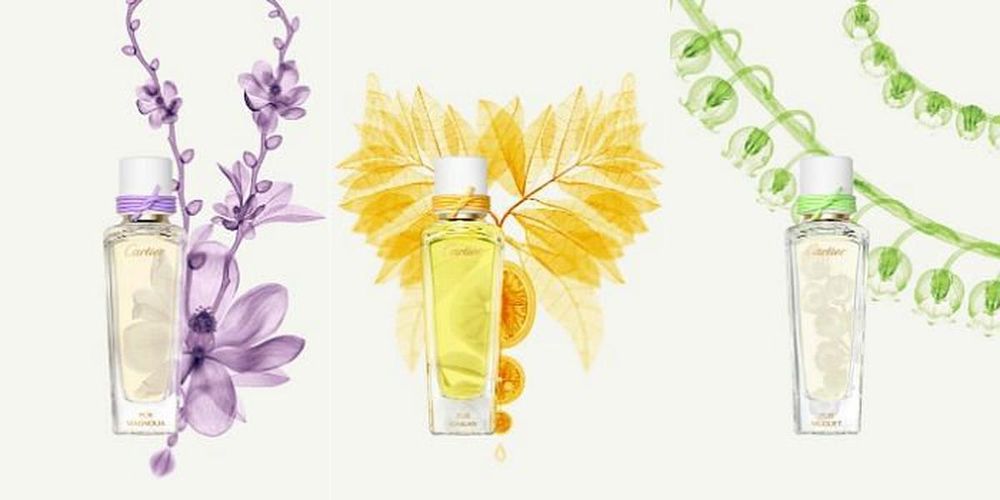Discover French Perfumer Mathilde Laurent's Love Letter To Nature
Celebrate nature in its purest form with a trio of new fragrances from Cartier

Mathilde Laurent, Cartier’s first female in-house perfumer, has always been partial to Mother Nature and the emotional scents that it evokes. And so it is with her latest creations for Cartier’s Les Épures de Parfum collection, which she likens to living pieces of jewellery. Here, she shares more about the new bottlings, bursting with freshness and life.
The trio of Les Épures de Parfum fragrances draws on the concept of perfumes as living pieces of jewellery. How does that work?
Think about it this way: When you put on perfume, it dances around the neck, the wrists, the ears—the exact same places you would wear jewellery. Which is why I liken perfumes to invisible pieces of jewellery, because they’re undeniably present yet are intangible; we perceive them by smelling, not seeing.
Related article: The Best Female Fragrances To Spritz This Summer
So it’s possible to layer these perfumes with others in Cartier’s arsenal, just as you would layer and wear different pieces of jewellery?
Each of the Les Épures scents focus on one ingredient, so I’d say yeah, they’re simple enough in composition to be used for layering. L’Envol de Cartier’s oriental honey composition, for instance, would go well with the hesperidic freshness of Pur Kinkan.
You’ve always taken inspiration from nature. What makes these new scents so different from the others you’ve created?
With this trio, I wanted to go back to the origins of perfumery. I wanted to create something natural, light, and joyful with the pleasures of nature and nothing else. Perfumery, I feel, is born from an intense “hyper” pleasure, which drives man to want to take away, to appropriate the smell that amazes him. This is what led man to start distilling and infusing flowers, woods, leaves; the goal was to appropriate, to take away, to reproduce the beauty of nature. I wanted to offer a new kind of perfume; a simpler, more natural kind, for those who can’t really find what they’re looking for in classic perfumery.
Related article: Kaya Scodelario On Being The New Face Of Clash De Cartier
Tell us more about the new fragrances.
It took me a year to perfect the scents I envisioned. Lily of the valley is a very popular smell in perfumery and I personally love it. I also very recently discovered a new molecular composition I wanted to use to create my own version of it, and so Pur Muguet was born. Pur Kinkan, meanwhile, represents the origin of the historic perfumery and its cologne waters, which are symbols of compositional perfumery. I Mathilde Laurent wanted to create a cologne at its purest, a cologne of the 21st century, if you will, with a single citrus fruit, encompassing the tangy and hesperidic appearance of the fruit as well as the very green appearance of its leaves. With Pur Magnolia, I proposed the “raw”, totally authentic smell of the magnolia, a beautiful flower so often romanticised in perfumes. I’d like users to feel like they’re in a forest, a garden or under a tree. I want to bring to them the incredible universal pleasures that nature can offer.
What’s your creation process like?
It starts with an idea, a story—we never think of perfume from just a “perfumistic” perspective, especially at a maison such as Cartier. This story is built around the reflections of the whole team; my role is just to concretise the idea. This is where craft turns into lengthy and fastidious technique. My assistant makes the “recipe”; I only work on paper, I don’t touch the ingredients. I keep my nose fresh. We elaborate a fragrance much like a dish; we remake it every time by adding an ingredient or varying the quantities of existing ones. Every perfume I’ve created is never the same because there are so many twists and turns in the process.
What’s your philosophy when it comes to perfumes?
Perfumery, before our time, was completely disconnected from masculinity and femininity. It was an art, like a painting that has no sex. And I’d like to keep it that way.
Related article: Meet The Founder Of The Most Controversial Fragrance House Ever